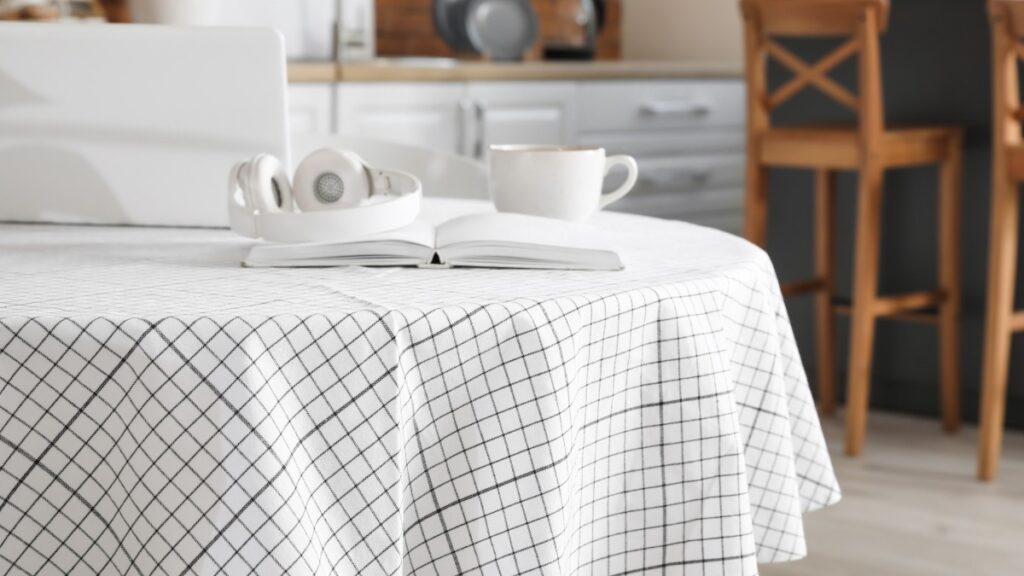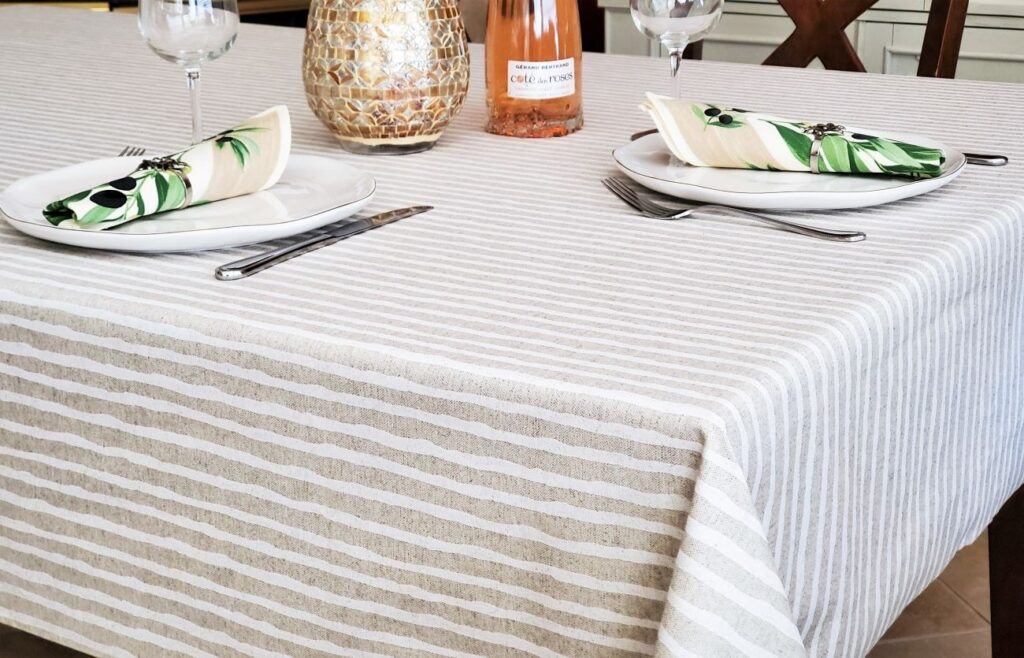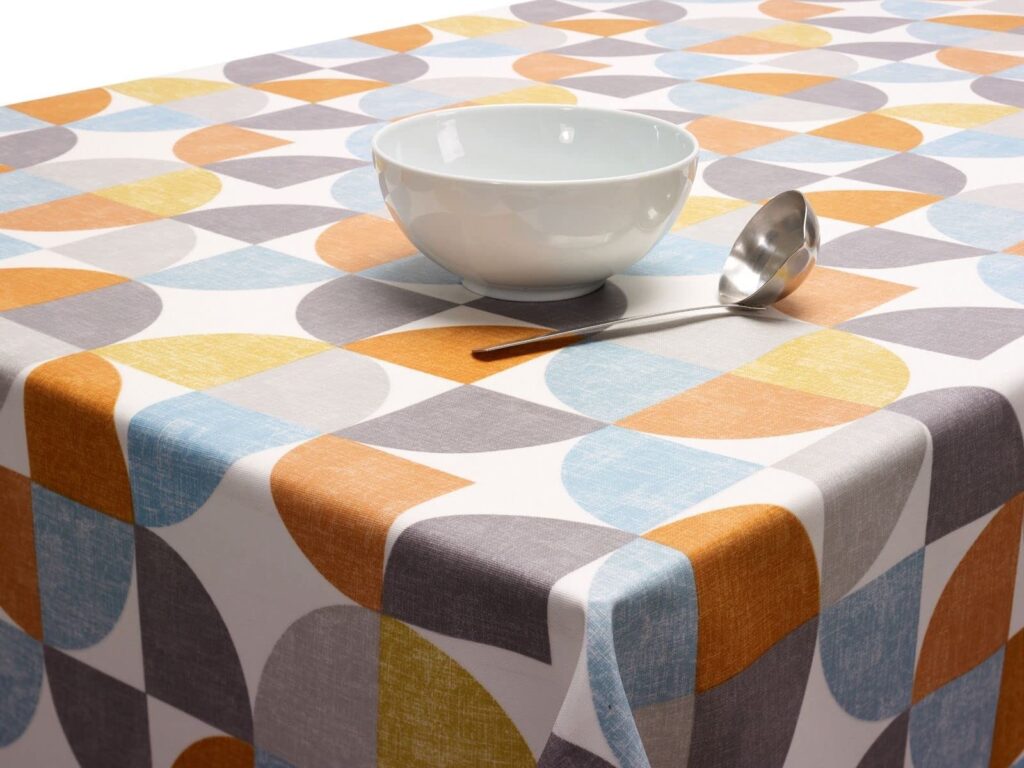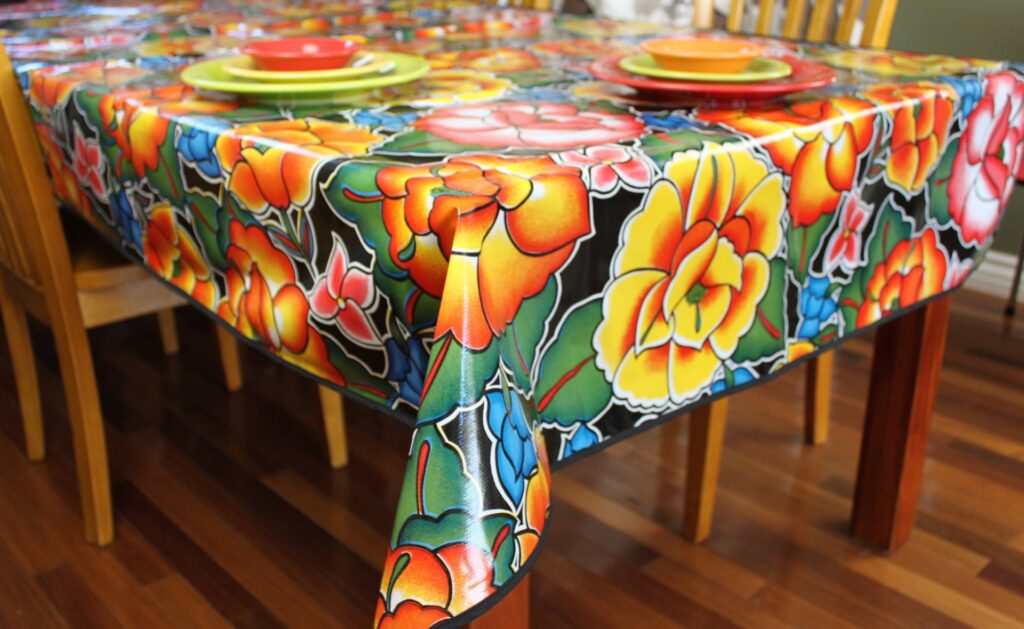In homes where the kitchen or dining table sees a lot of action — from mealtimes to messy crafts — a practical table covering can make life much easier. That’s where an oil cloth table cloth comes in. Known for being wipe-clean and hard-wearing, oil cloth is a sensible option for busy households.
But what exactly is it, and why is it so popular?
What is Oil Cloth?

Despite the name, modern oil cloth doesn’t actually contain oil. It’s usually made by coating a cotton or cotton-blend fabric with a layer of PVC (or similar material). This makes it water-resistant, stain-resistant and easy to clean with just a damp cloth.
It’s a low-maintenance alternative to traditional fabric tablecloths, which often need regular washing and ironing.
Everyday Benefits
One of the main appeals of an oil cloth table cloth is that it offers protection without sacrificing appearance. It’s commonly used to:
- Guard tables against spills, scratches and stains
- Provide a clean surface for arts, crafts or homework
- Serve as a temporary covering for events or outdoor meals
Unlike plastic covers, oil cloth tends to be a bit more flexible and soft, making it more comfortable to sit at and a little nicer to look at.
Design and Style Options
Oil cloths are available in all sorts of patterns — everything from gingham and polka dots to floral prints or geometric shapes. Some people opt for something seasonal, while others go for neutral colours that blend into the background.
They’re also easy to cut to size, so they can be used on smaller tables or trimmed to fit picnic benches, craft tables or desks.
Things to Keep in Mind

While oil cloth table cloths are practical, they’re not indestructible. Over time, the surface can show signs of wear, especially if exposed to high heat or used outdoors for long periods. Hot pans and sharp knives are best kept away from the surface to avoid damage.
Also, they don’t go in the washing machine — but that’s the trade-off for being so easy to wipe clean.
Eco-Friendly Alternatives and Considerations
Some newer oil cloth options now use non-toxic, phthalate-free coatings that make them a more environmentally responsible choice. Manufacturers have started offering versions that use water-based or biodegradable laminates, which reduce the environmental footprint while still delivering the same easy-wipe convenience.
Look for products labeled BPA-free or REACH-compliant when shopping for a more eco-conscious version. These often meet European safety standards and avoid harmful plasticizers. If sustainability matters to you, avoid vinyl-heavy versions and instead choose laminated cotton with certified coatings.
Not every oil cloth option will meet the same standards, so checking labels or product descriptions can help you avoid unnecessary exposure to unsafe materials. Some vendors also offer organic base fabrics that add another layer of eco-value.
Tips for Storage and Long-Term Use

To keep oil cloth in good condition between uses, store it flat or rolled rather than folded. Folding can lead to permanent creases that affect both appearance and usability. If space is tight, roll it around a cardboard tube or large mailing tube to prevent cracking along the surface.
Keep it away from prolonged sunlight exposure when stored, especially near windows or radiators. Direct heat or UV rays can cause fading or drying of the outer layer.
In Summary
For everyday use, an oil cloth table cloth offers a good balance between practicality and style. It’s not a glamorous item, but for families, hobbyists or anyone tired of constant washing and ironing, it quietly gets the job done.
Sometimes the simplest solutions are the most useful — and in that sense, oil cloth is worth a second look.







